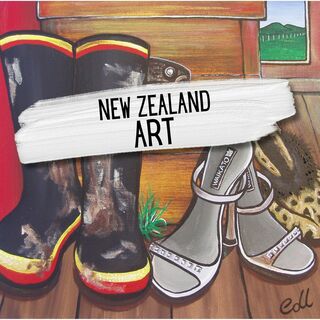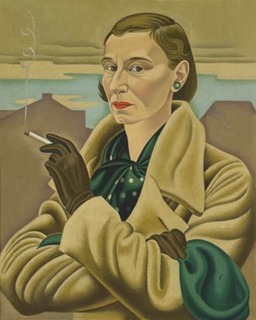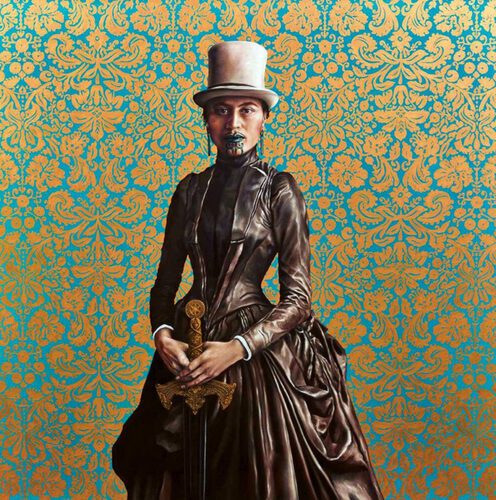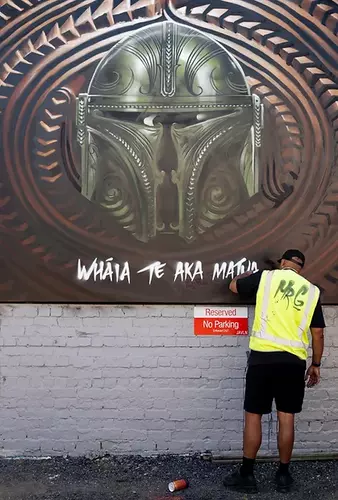Landscapes to Culture: Exploring the Rich Palette of New Zealand Art
Unveiling the Spirit of the Land
As a practitioner of New Zealand art myself I love to share what New Zealand, a country renowned for its breathtaking landscapes and rich cultural heritage has to offer. I feel connected to the land and it’s unique and diverse culture.
From the traditional Maori art forms deeply rooted in indigenous culture to contemporary expressions that reflect the country's unique identity, New Zealand art is a tapestry of diversity and creativity. In this article, we delve into the world of New Zealand art, exploring its history, key artists, and the profound influence of the country's natural environment.
A Brief Historical Overview
Inherently, New Zealand's cultural evolution is linked to its historical development. The indigenous Maori people, who arrived in New Zealand around the 13th century, brought with them a rich artistic tradition. Maori art is characterised by intricate wood carvings, weaving, and ta moko (traditional tattooing).
These art forms often depict stories, genealogies, and spiritual connections to the land, establishing a solid foundation for contemporary New Zealand art as it is today.
Colonial Era
During the colonial era, European influence shaped New Zealand's art landscape. The arrival of European settlers in the 19th century brought academic styles, landscape painting, and portraiture. Prominent early New Zealand artists such as Charles Frederick Goldie and Gottfried Lindauer captured the essence of Maori culture, showcasing their subjects with a sense of reverence and respect.
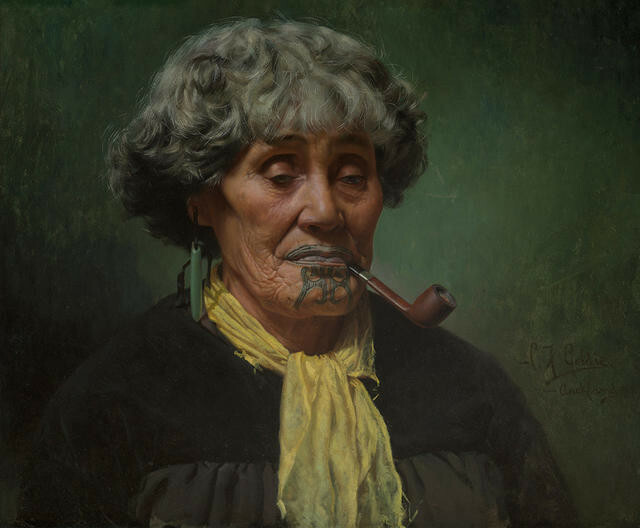
19th and Early 20th Centuries
In the 19th and early 20th centuries, New Zealand painting was predominantly influenced by a conservative English style, with landscape as the primary genre.
The early painters were often amateurs, many being schoolteachers, homemakers, ministers, politicians, and surveyors, who focused more on recording information about places rather than creating works of art. Their styles and approaches were shaped by European modes of viewing the landscape rather than reflecting the reality of the New Zealand environment.
However, towards the end of the 19th century, the arrival of influential professional European painters injected new energy into the local art scene. In the early decades of the 20th century, many ambitious and talented New Zealand artists travelled to Europe to study modern developments firsthand, including movements like cubism and fauvism.
While some artists returned home, many chose to remain abroad, feeling that the artistic environment in New Zealand was too conservative and lacked support.
1930s and 1940s
During the 1930s and 1940s, New Zealand painting developed a more distinctive identity, expressed mainly through the regionalist style. After the Second World War, there was a growing understanding and knowledge of modern international art.
Greater freedom of travel, the availability of art magazines and books, improved colour reproduction, and touring exhibitions exposed New Zealand artists to more avant-garde art movements and ideas.
The postwar decades also marked the beginning of a Māori cultural and nationalist renaissance. Younger Māori artists emerged, creating works synthesising Māori and European art forms and practices. These artists embraced their heritage, incorporating Māori symbolism, motifs, and stories into their artwork while exploring new avenues of artistic expression.
The country's art scene blossomed as New Zealand evolved, embracing diverse artistic influences and nurturing its cultural heritage. Artists explored new techniques, challenged established norms, and sought to express the essence of New Zealand's unique identity.
This ongoing journey of artistic exploration and cultural integration continues to shape New Zealand art's dynamic and diverse landscape today.
Key New Zealand Artists
Colin McCahon
Colin McCahon, one of New Zealand's most influential artists, is celebrated for his distinctive style and deep connection to the country's landscapes. McCahon's artworks often feature bold, abstract landscapes and text-based compositions that reflect his spiritual and existential contemplations. His masterpiece, "Northland Panels," depicts the spiritual essence of the Northland region, capturing the ethereal beauty of New Zealand's natural environment.
Rita Angus
Rita Angus, a revered New Zealand artist whose work I was lucky enough to see in an exhibition in Dunedin, captivated audiences with her distinctive style and insightful paintings. Known for her landscapes, rural scenes, and self-portraits, Angus infused her works with introspection and emotional depth. Her attention to detail and mastery of colour brought her subjects to life, creating tranquil and contemplative atmospheres.
Angus also delved into social and political themes, adding poignant commentary to her art. Her contributions have been celebrated in prestigious galleries worldwide, solidifying her place as one of New Zealand's influential painters. Angus' legacy inspires artists and invites viewers to reflect on the beauty and complexities of the human experience.
Ralph Hotere
Renowned for his mighty, abstract works, Ralph Hotere explored politics, spirituality, and identity themes. Hotere's masterful use of colour and texture and his ability to convey emotions and socio-political commentary earned him international recognition. His iconic "Black Paintings" series confronts nuclear power issues and environmental degradation, profoundly impacting New Zealand's contemporary art scene.
Lisa Reihana
Lisa Reihana is a contemporary New Zealand artist known for her multimedia installations and video art. With a focus on indigenous perspectives and postcolonial narratives, Reihana's work challenges traditional art forms and questions established historical narratives. Her groundbreaking video installation, "In Pursuit of Venus," garnered global acclaim and showcased New Zealand's commitment to pushing artistic boundaries.
Shane Cotton
Shane Cotton's art is deeply rooted in his Maori heritage and explores themes of identity, colonisation, and spirituality. His paintings often incorporate symbols and iconography from Maori mythology, blending them with contemporary elements. Cotton's unique style and evocative imagery have established him as a leading figure in New Zealand's contemporary art scene.
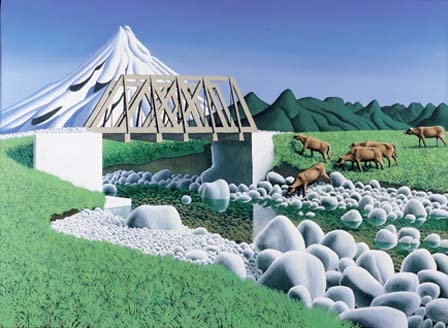
Michael Smither
Michael Smither is a highly regarded New Zealand artist known for his diverse range of artistic expressions. His career began with a solo exhibition in 1961, and he drew inspiration from artists like Rita Angus and Lois White during his studies. Despite a minor stroke in 2014, Smither remains committed to painting, stating that he would prefer to continue creating rather than retire. His works span various media, including oils, acrylics, and screenprints. He explores themes such as domestic life and landscapes, particularly those of his Taranaki upbringing. Smither's meticulous attention to detail and hard-edged style have garnered acclaim, with paintings like "The Family in the Van" and "Rocks with Mountain" becoming iconic in New Zealand. Notably, his 1967 painting "Sea Wall and Kingfisher" achieved a record auction price for a living New Zealand artist. I found Michael’s work very inspiring. As a teenager I lived in New Plymouth and saw his work in both galleries and murals in the township. I heard him speak at a gallery in Hamilton and was honoured to meet him.
Michael Parekowhai
Michael Parekowhai is a highly regarded New Zealand artist known for his diverse and thought-provoking works. His art encompasses sculpture, photography, and installation, exploring cultural themes and challenging conventional notions. His iconic piece "The World Turns," featuring a bull with a grand piano, has gained international recognition. Parekowhai's art explores identity, culture, and history, blending traditional and contemporary elements. He represented New Zealand at the 2011 Venice Biennale with an immersive installation called "On First Looking into Chapman's Homer." Beyond his artworks, Parekowhai has contributed to academia and mentoring. His innovative and thought-provoking approach has earned him acclaim and a significant influence in the art world, making him one of New Zealand's respected contemporary artists.
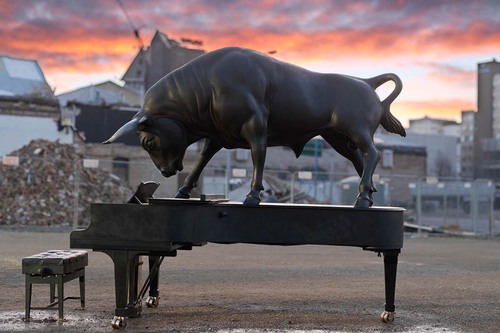
Dick Frizzell
Dick Frizzell, a highly regarded New Zealand artist, is known for his bold and eclectic style that blends pop culture and iconic New Zealand imagery. His work encompasses humour, nostalgia, and cultural exploration. Frizzell's versatile approach ranges from vibrant and whimsical to introspective and thought-provoking. He challenges traditional cultural identity perceptions and invites viewers to question societal norms. With extensive exhibitions and work in public and private collections, Frizzell's influence extends beyond the canvas. He has also ventured into design, illustration, and wine label art. Frizzell's dynamic and innovative approach has made him an influential figure in New Zealand's art scene, leaving an indelible mark with his visually captivating and culturally significant creations.
Sophia Minson
Sophia Minson, a contemporary New Zealand artist, has made a name for herself with her vibrant and captivating artworks. Born in 1984, Minson is of Māori (Ngati Porou), Swedish, English, and Irish descent. Her childhood was marked by living in various countries due to her father's work as an engineering project manager.
Minson's talent was recognised early on when she won first prize in two prestigious New Zealand art awards in 2005. She continued to excel in her artistic endeavours, graduating with a degree in Spatial Design from Auckland University of Technology. Her artwork has garnered attention and accolades, earning her recognition as a finalist in the Adam Portraiture Award on three occasions.
With a focus on contemporary Maori oil portraits, Minson has painted influential figures in Maori culture, including Tame Iti, Tiki Taane, Stan Walker, Turumakina Duley, and Dame Joan Metge. Her portrait of Metge, commissioned by the New Zealand Portrait Gallery, became a part of their permanent collection.
Minson's artistic journey has taken her to numerous exhibitions in New Zealand and internationally, showcasing her works referencing her mixed heritage and Maori myths.
In addition to her artistic pursuits, Minson has participated in collaborative art projects, including the documentary "Canvassing the Treaty," which aired on Maori TV and the international film festival. Her contributions to the contemporary art scene in New Zealand highlight her talent, cultural heritage, and dedication to her craft.
The Influence of New Zealand's Natural Environment
New Zealand's diverse and awe-inspiring landscapes have played a significant role in shaping the artistic expressions of its inhabitants. From the rugged mountains of the Southern Alps to the pristine beaches and lush forests, the country's natural beauty is a constant muse for artists, including myself.
Artists like Grahame Sydney and Toss Woollaston have captured the vastness and unique light quality of the South Island. At the same time, painters such as Rita Angus and Robin White have drawn inspiration from the rural landscapes and cultural heritage of the North Island. The dynamic relationship between New Zealand artists and their environment is a testament to their deep spiritual connection with the land.
Contemporary Art Movements
A vibrant mix of artistic styles and movements marks New Zealand's contemporary art scene. The influence of international art trends, combined with a distinct New Zealand perspective, has given rise to innovative approaches and diverse expressions.
The emergence of the "Pacific Renaissance" in the 1990s saw artists of Pacific Island descent exploring their cultural heritage and addressing issues of identity, diaspora, and colonial history. Artists such as Fatu Feu'u and John Pule contributed significantly to this movement, infusing their art with the vibrant colours and symbolism of Pacific Island cultures.
Then there was the rise of street art and urban art forms, such as graffiti and muralism, has also significantly impacted the New Zealand art scene. Artists like Askew One and Mr G have transformed public spaces into vibrant canvases, addressing social and political issues while adding a contemporary edge to the country's artistic landscape.
At the End of The Day
New Zealand art embodies a fusion of cultural heritage, colonial influences, and a profound connection to the country's natural landscapes. From the traditional Maori art forms to contemporary expressions pushing artistic boundaries, New Zealand artists have enriched the global art scene with their unique perspectives and creative prowess. The works of Colin McCahon, Ralph Hotere, Rita Angus, Sophia Minson, and many others showcase the diverse and influential voices within the New Zealand art community.
As we continue to explore and appreciate New Zealand art, we gain a deeper understanding of the rich tapestry of this remarkable country and its people. New Zealand artists, inspired by their natural surroundings and cultural heritage, navigate the complex layers of history, identity, and spirituality, offering us a unique lens through which we can experience the essence of the land itself.
As a fellow New Zealand artist, I feel fortunate to be a part of this diverse and fascinating art scene and hope my contribution will be remembered in times to come too. Take a look at my Jandals range, a popular New Zealand themed artwork.
